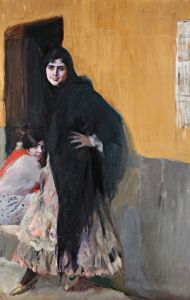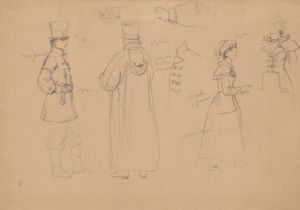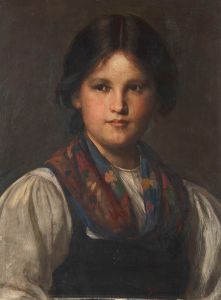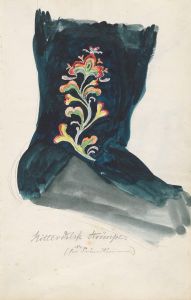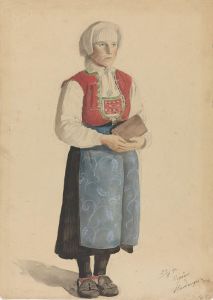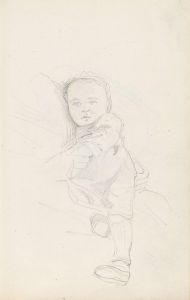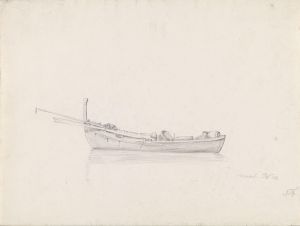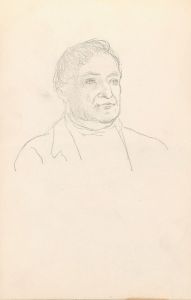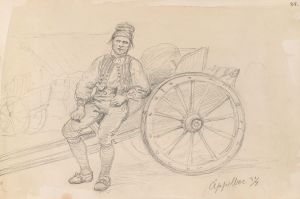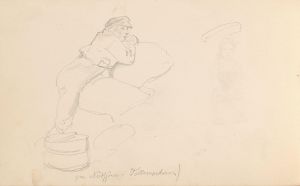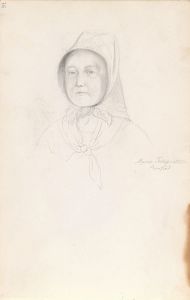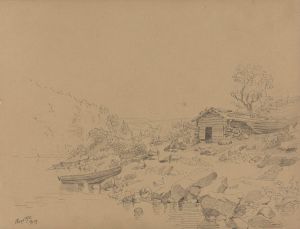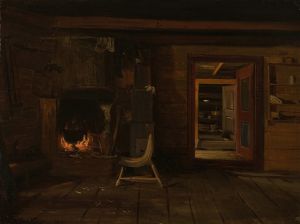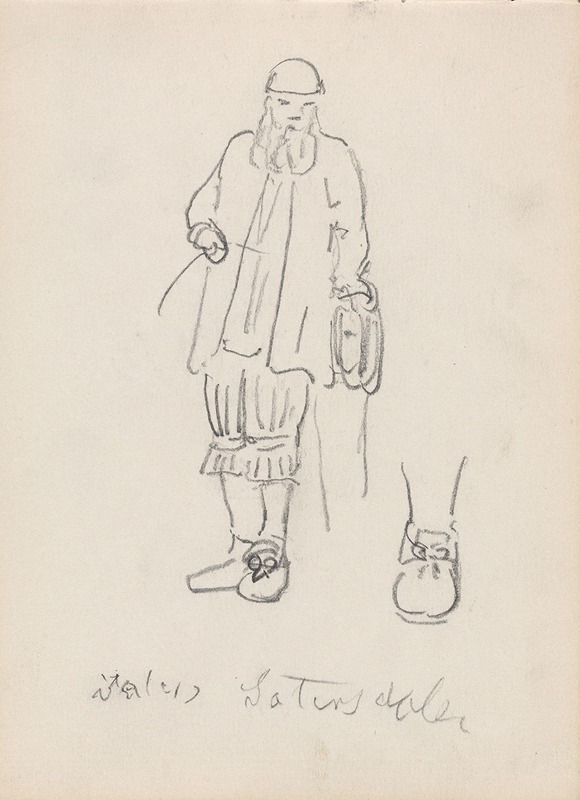
Mannsfigur i drakt fra Setesdal
A hand-painted replica of Adolph Tidemand’s masterpiece Mannsfigur i drakt fra Setesdal, meticulously crafted by professional artists to capture the true essence of the original. Each piece is created with museum-quality canvas and rare mineral pigments, carefully painted by experienced artists with delicate brushstrokes and rich, layered colors to perfectly recreate the texture of the original artwork. Unlike machine-printed reproductions, this hand-painted version brings the painting to life, infused with the artist’s emotions and skill in every stroke. Whether for personal collection or home decoration, it instantly elevates the artistic atmosphere of any space.
"Mannsfigur i drakt fra Setesdal" (Man in Costume from Setesdal) is a painting by the renowned Norwegian artist Adolph Tidemand. Adolph Tidemand, born on August 14, 1814, in Mandal, Norway, and died on August 8, 1876, in Christiania (now Oslo), was a prominent figure in Norwegian art during the 19th century. He is best known for his detailed and evocative depictions of Norwegian folk life and traditions.
This particular painting, created in 1848, is a fine example of Tidemand's dedication to capturing the essence of Norwegian rural culture. The artwork portrays a man dressed in traditional attire from Setesdal, a valley in southern Norway known for its distinctive folk costumes. The Setesdal costume, or "bunad," is characterized by its intricate embroidery, vibrant colors, and unique design elements that reflect the region's cultural heritage.
In "Mannsfigur i drakt fra Setesdal," Tidemand meticulously renders the details of the man's attire, highlighting the craftsmanship and artistry involved in creating such garments. The man's costume includes a richly decorated vest, a white shirt with embroidered cuffs, and a dark jacket adorned with silver buttons. He also wears knee-breeches, woolen stockings, and traditional shoes, completing the authentic Setesdal look. The attention to detail in the clothing is a testament to Tidemand's skill as a painter and his commitment to preserving Norwegian cultural identity through his art.
The background of the painting is relatively simple, ensuring that the viewer's focus remains on the figure and his attire. This approach is typical of Tidemand's work, where the subject often takes center stage, allowing the cultural and historical significance of the depicted scene to shine through. The use of light and shadow in the painting adds depth and dimension, further enhancing the realism of the portrayal.
Adolph Tidemand's works, including "Mannsfigur i drakt fra Setesdal," played a crucial role in the national romantic movement in Norway. This movement sought to celebrate and preserve the country's unique cultural heritage at a time when Norway was striving for independence and a distinct national identity. Tidemand's paintings provided a visual record of Norwegian traditions, customs, and everyday life, contributing to a sense of national pride and cultural continuity.
"Mannsfigur i drakt fra Setesdal" is housed in the National Museum of Art, Architecture and Design in Oslo, Norway. The museum's collection includes many of Tidemand's works, reflecting his significant contribution to Norwegian art and culture. Visitors to the museum can view this painting alongside other notable pieces by Tidemand, gaining insight into the artist's vision and the historical context of his work.
In summary, "Mannsfigur i drakt fra Setesdal" by Adolph Tidemand is a masterful depiction of traditional Norwegian attire from the Setesdal region. Through his meticulous attention to detail and commitment to cultural preservation, Tidemand has created a lasting tribute to Norway's rich folk heritage. This painting remains an important piece of Norway's artistic legacy, celebrated for its historical and cultural significance.





